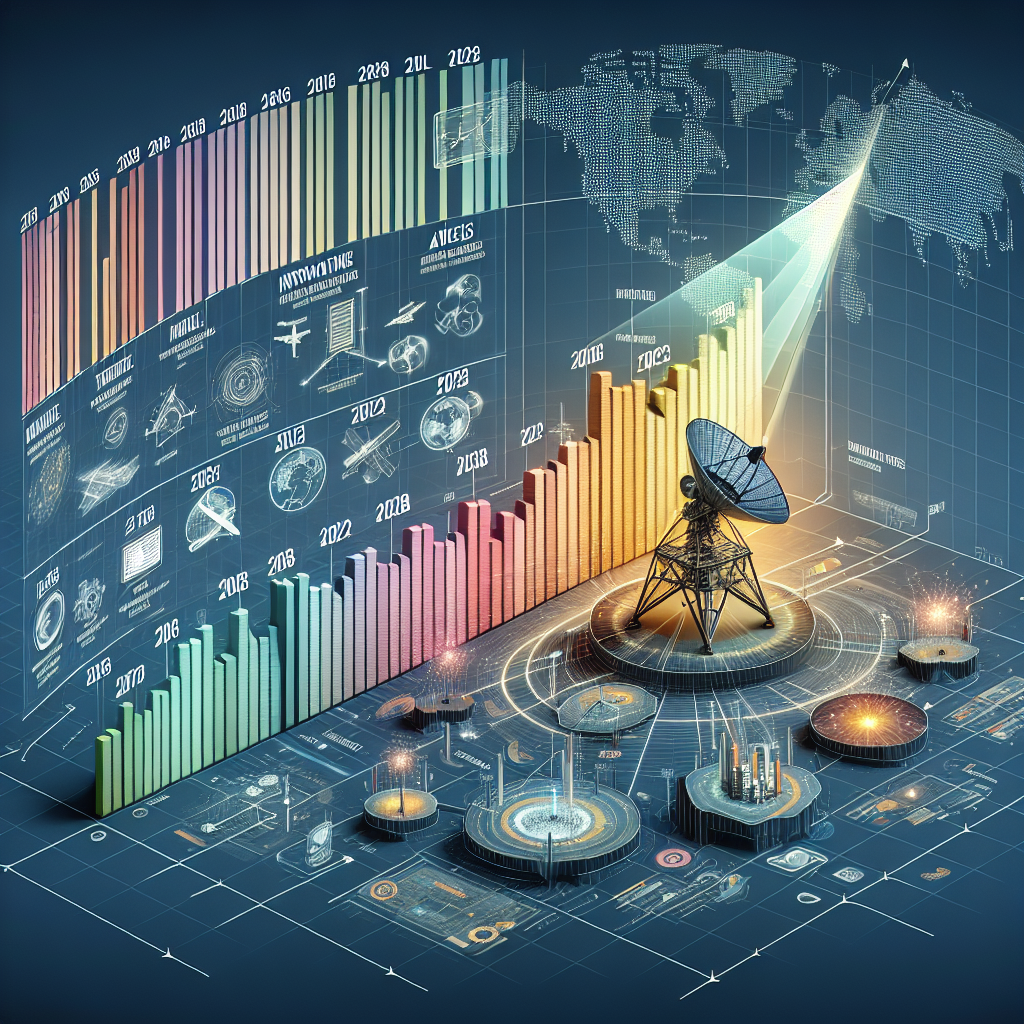Global Radar Market Poised for Expansion Through 2028
The global radar market is on a strong growth track, backed by rapid technological advancements and strategic innovations. According to Allied Market Research, the radar market was valued at $32.56 billion in 2019 and is expected to reach an impressive $49.43 billion by 2028. This growth trajectory signifies a CAGR of 3.80% from 2021 to 2028. As nations upgrade their defense systems and more industries adopt cutting-edge radar technologies, the landscape for radar systems continues to evolve dramatically.
Key Drivers Fueling Market Growth
The radar market is being driven by a combination of industrial, technological, and geopolitical factors. Here are the main contributors:
- Rising global defense budgets: Many countries are investing in advanced surveillance and tactical detection systems to enhance their national security.
- Increased demand for radar in automotive and aviation sectors: Advanced Driver Assistance Systems (ADAS) and autonomous vehicles rely on radar systems for navigation and safety.
- Surging demand for maritime radar systems: Both civil and military maritime sectors are increasingly utilizing radar for navigation, surveillance, and weather tracking.
- Adoption of modern weather monitoring technologies: Meteorological agencies are deploying sophisticated radar systems for improved weather forecasting and disaster response.
Market Segmentation: A Closer Look
The radar market has been segmented based on offering, product type, platform, application, and end user. Each segment plays a pivotal role in the overall market dynamics.
1. Offering: Hardware and Software
As radar systems become more complex, the need for integrated software and scalable hardware has grown. While hardware accounted for the majority share in 2019, software is expected to witness rapid growth due to innovations in signal processing and AI-enabled systems.
2. Product Type: Continuous Wave Radar and Pulsed Radar
Pulsed radars have traditionally dominated the market due to their accuracy over long distances. However, continuous wave (CW) radars are climbing the ranks in automotive and drone applications because of their real-time detection capabilities.
3. Platform: Ground, Naval, Airborne, and Space-Based
Airborne radar systems took the lead in 2019, and this trend is expected to continue due to their wide-scale use in fighter jets, drones, and surveillance aircraft. The space-based radar segment is also emerging rapidly thanks to satellite technology developments and earth observation needs.
4. Application: Remote Sensing, Air Traffic Control, Ground Surveillance, and Others
Ground surveillance and air traffic control have consistently recorded the highest demand for radar applications. Emerging use cases—including environmental monitoring and industrial automation—are expected to expand the application field further.
5. End User: Defense, Commercial, and Industrial
The defense sector has historically dominated radar usage due to its critical role in national security and border surveillance. However, commercial segments such as automotive, aviation, and telecommunications are registering rapid growth.
Regional Analysis: Where Growth Is Happening
North America:
North America held a dominant share of the global radar market in 2019, driven by heavy defense investments from countries like the U.S. and Canada. The region also benefits from being home to some of the leading radar manufacturers and technology companies.
Asia-Pacific:
Emerging economies like China, India, and South Korea are making substantial investments in radar technology, especially in defense and urban surveillance. The increasing adoption of smart transportation systems is another growth spurt factor in the region.
Europe:
Europe is focusing on radar applications for aerospace and maritime safety. Initiatives from the European Space Agency (ESA) and advanced automotive industries in Germany and the UK are driving further technology adoption.
Latest Technology Trends in Radar Systems
Technology continues to be the key to unlocking growth in the radar market. Here are some revolutionary trends reshaping the radar ecosystem:
- Artificial Intelligence (AI) & Machine Learning: Smart radars can now adapt to changing environments and detect complex threats with greater precision.
- Phased Array Radar Systems: These radars offer quick beam steering and are highly efficient, particularly in military and weather monitoring applications.
- Miniaturization & Integration: The development of compact and integrated radar units is enabling use in smaller platforms such as drones and autonomous vehicles.
- Advanced Signal Processing: Enhanced algorithms are improving radar resolution and accuracy across multiple domains.
Key Players in the Global Radar Market
Several industry giants and emerging players are taking center stage in the global radar technology race. Major names driving innovation and competition include:
- Lockheed Martin Corporation
- Raytheon Technologies Corporation
- Northrop Grumman Corporation
- Saab AB
- BAE Systems
- Thales Group
These companies are heavily investing in R&D and pursuing strategic collaborations, acquisitions, and partnerships to elevate their technology portfolio.
Future Outlook and Opportunities
Looking ahead, the radar market is expected to gain further momentum through:
- Smart cities and infrastructure developments, integrating real-time surveillance solutions.
- Increasing adoption of UGVs and UAVs, which rely heavily on radar for navigation and obstacle detection.
- Heightened awareness around cybersecurity and homeland protection, prompting sophisticated radar deployments.
Conclusion
The radar market is undergoing a transformative shift as technology, defense needs, and commercial applications push its boundaries. With investments flowing in and innovation at the forefront, the radar systems of the future are set to become more intelligent, efficient, and integral to numerous industries. For businesses and stakeholders, this presents an exciting opportunity to be part of a market that is not just growing—but revolutionizing how we perceive and interact with the environment.



Leave a Reply